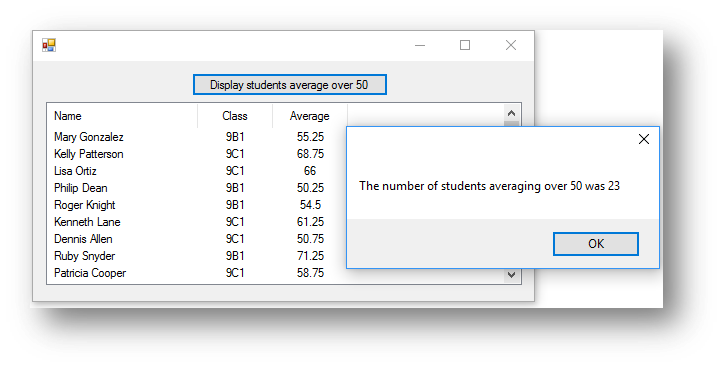

If you use local type inference (refer to Chapter 1 for more information), you don’t even need to specify the type or procedure level (for example, in a Sub, a Function or a Property, but not for module or class variables) you can let the compiler infer the correct type from the type of the expression or the constant from which the variable is assigned: Dim aDouble = 123.3D Therefore, you can replace the two preceding statements with the following single statement: Dim aDouble As Double = 123.3D Just as with other base data types, declaration and assignment can take place in a single statement.

In the following example, the type literal is the D following the actual value: aDouble = 123.3D Numeric variables can be assigned values, which are strings made up of digits followed (if necessary) by a type literal. You can then use aDouble immediately in the code. A variable of the type Double can, for example, be declared with the following statement: Dim aDouble As Double There are certain keywords that define the type of a constant value. Constant values can be directly assigned to numeric types in the program’s code. You’ll see more about nullable data types in Chapter 18, “Advanced Types.” Defining and Declaring Numeric Data TypesĪll numeric data types (as with all value types) are declared without the keyword New. Here’s how you declare an Integer data type as nullable: Dim t As Integer? With the release of Visual Basic 2008, these data types are also part of the Visual Basic language syntax, and they are defined by the question mark symbol as type literal. Nullable data types behave similarly to their regular data type counterparts, but they can also reflect a non-defined state, namely null 1 (or Nothing in Visual Basic). The nullable data types have been around since Visual Basic 2005, and we discussed them briefly in the introduction to Chapter 1. They differ in the range, the precision, or scale, of the values that they can represent (for instance, the number of decimal points), and their memory requirements.

The data types SByte, UShort, Uinteger, and ULong were introduced with Visual Basic 2005. Most of the operations of the data types Byte, Short, Integer, Long, Single, Double, and Boolean fall into this category.įor processing numbers, Visual Basic provides the data types Byte, Short, Integer, Long, Single, Double, and Decimal. The processor can do this by itself, so such operations are therefore very fast. This means that no program logic is necessary to calculate an arithmetic expression (for example, a floating-point division). NET Framework directly to the processor for execution. Many operations and functions of certain base data types can be delegated by the. When a certain expression is exclusively defined as a constant (such as the expression 123.32D*2+100.23D), it can be evaluated during compilation. It is possible to declare a base data type as a constant. For example, specifying a value of 123.324D identifies a variable of type Decimal with a specific magnitude. You can set the value of each base data type directly. NET programming language, and they expose the following characteristics:
#Convert vb6 to vb net 2010 code
They are an integral part of the C# and Microsoft Visual Basic.NET languages you can recognize them easily because the Microsoft Visual Studio code editor colors them blue as soon as you declare them.īase data types include all the types that are part of any. The base data types are mainly primitive data types, such as Integer, Double, Date, String, and so on, with which you’re already familiar. These are the data types that you’ll be using over and over as a developer. However, there’s still a lot to learn about the base data types, which are part of the Microsoft. In Chapter 1, “Beginners All-Purpose Symbolic Instruction Code,” you learned about variables, including what the different types of variables are, and you saw a few examples of declaring and using variables of various data types.


 0 kommentar(er)
0 kommentar(er)
